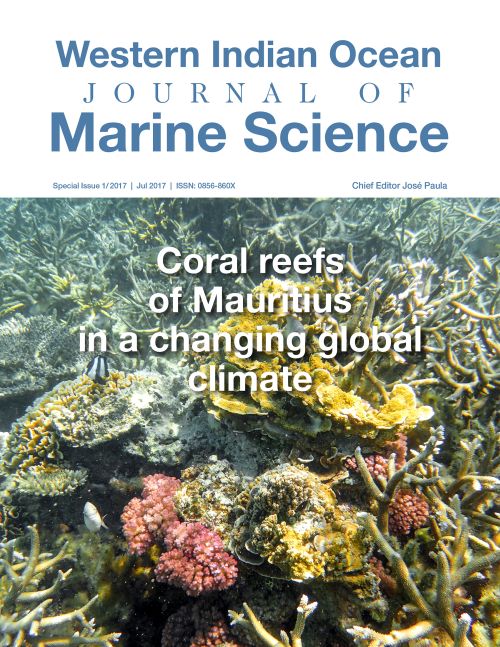Main Article Content
Photophysiology of in hospite zooxanthellae in diseased and non-diseased scleractinian corals from Belle Mare, Mauritius
Abstract
This study investigated the occurrence of white band disease (WBD, tissue sloughing) and white plague (WP, com- plete whitening) among six scleractinian corals at Belle Mare, Mauritius. Photosynthetic responses of in hospite zoox- anthellae in diseased and non-diseased/ healthy corals were characterised via e ective quantum yield (ФPSII or ΔF/Fm, light-adapted), relative maximum electron transport rate (rETRmax), and non-photochemical quenching (NPQ), using a Diving Pulse-Amplitude Modulated (D-PAM) uorometer. Coral disease occurrence survey (n=20 colonies) and sampling for diseased and non-diseased/ healthy corals were carried out at 9 stations along 3 transects across the lagoon from coast to reef, for the November 2013 to February 2014 summer non-bleaching months. A higher percentage (90%) of disease occurrence was observed in Acropora muricata (WBD 45%; WP 55%) than in Pocillopora damicornis (WBD only 10%). Pocillopora eydouxi, Galaxea fascicularis, Acropora cytherea, and Fungia repanda exhibited no diseases. ФPSII was normal (0.60±0.01) in all non-diseased/ healthy corals, but was signi cantly low (<0.20) in diseased corals in healthy-looking tissues adjacent to disease lesions. Low ФPSII was accompanied by low rETRmax and NPQ, indicating damage to photosynthetic apparatus in WBD-a ected A. muricata. The ndings indicated a higher suscep- tibility of A. muricata to the two diseases and may have implications for coral reef management and conservation.




